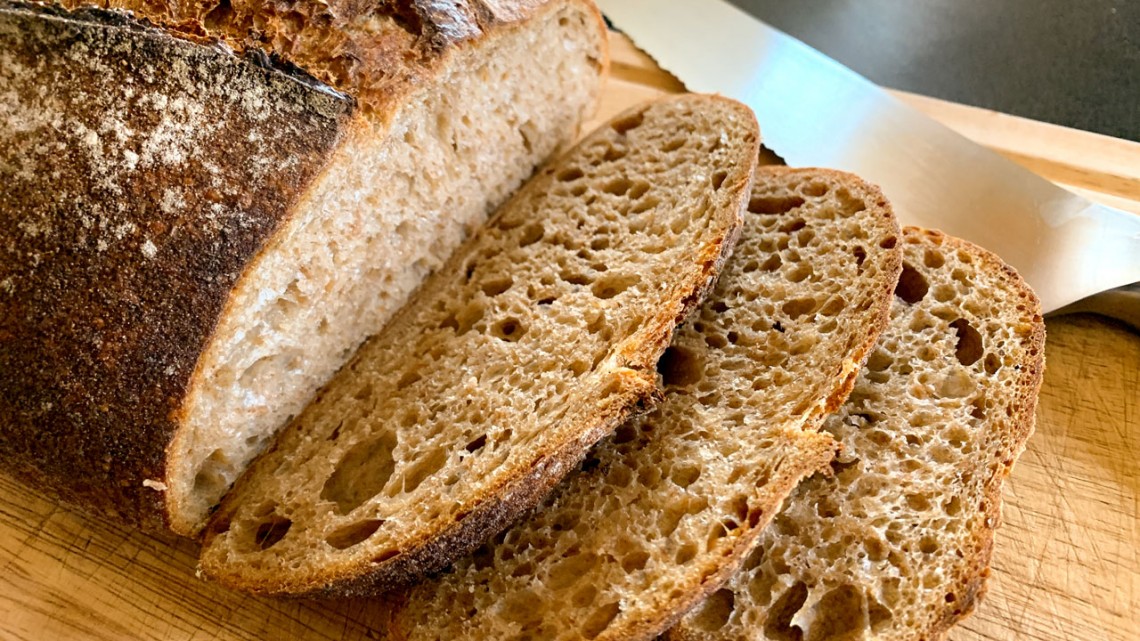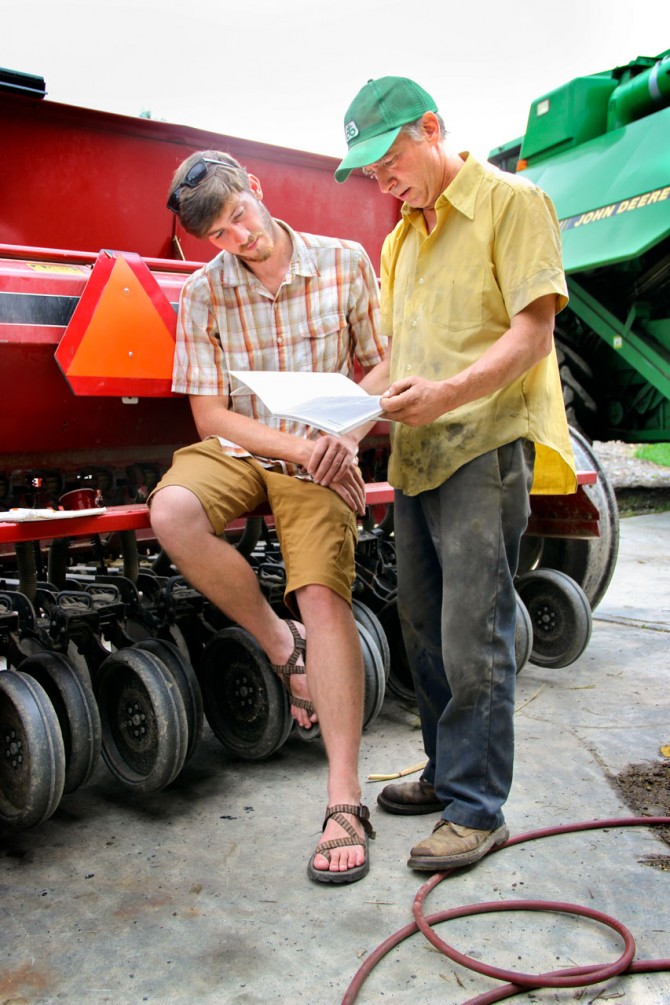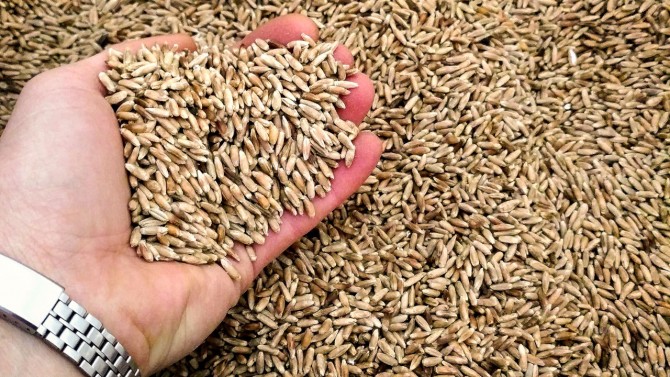
Kernza bread made for CSA customers from Wide Awake Bakery in Trumansburg, New York.
Researchers to explore perennial grains with $1.77M grant
By Krishna Ramanujan
A Cornell researcher is part of a multi-institution team helping upstate New York organic farmers grow and increase profitability of perennial grain crops, which can be planted once and will yield grain for multiple years.
The crops’ environmental benefits have led to commercial interest in using these grains in breads, cereals, beer and even whiskey.
Perennial grains are environmentally friendly thanks to their large root systems and because they don’t require annual tilling, which leads to soil erosion and degrades soil health. Perennial grains also need fewer fertilizers and pesticides and reduce agricultural runoff into waterways.
But current low yields for the grains – such as Kernza, a brand name for Thinopyrum intermedium, a domesticated version of intermediate wheatgrass – has led researchers to explore dual uses to increase profitability, such as using the plants as forage for animals.
Cornell is now a partner on a four-year, $1.77 million U.S. Department of Agriculture (USDA) Organic Research and Extension Initiative grant, awarded to develop growing guidelines for farmers and investigate dual uses for the organic crop.
Steve Culman, Ph.D. ’08, an agronomist at The Ohio State University, is director of the project, titled “Organic Dual-Use Perennial Grain Crops: Pathways to Profitability and Soil Health.”
Matt Ryan, an associate professor of soil and crop sciences in the College of Agriculture and Life Sciences, leads a subcontract on the grant and will receive $313,200. He and colleagues at the University of Minnesota and at The Land Institute in Kansas, where Kernza was developed, will be developing management guidelines for farmers on growing and increasing profitability.
“We think that this has a lot of potential in terms of improving the sustainability of our cropping systems,” Ryan said. “We want to facilitate that and show how to make it profitable.”
The researchers are exploring the practice of letting animals, such as beef cattle, graze on leaves in the spring, then letting the plants to grow grain until harvest in August. After the harvest, animals could graze on the remaining grain straw, which has a higher forage quality than wheat straw. “That work has been promising,” Ryan said.
Or the stalks could be collected and stored for winter forage, which adds value to the crop. While most annual grains – such as wheat, oats and barley – dry from the bottom up, Kernza does the opposite. When farmers harvest the grain, they can cut it high, leaving green material that makes for usable forage.
Ryan and colleagues will also investigate and share best practices for growing perennial grains, such as seeding rates, row spacing, how much nitrogen fertilizer crops might need, and where to sell the crop.
The USDA project is a continuation of a Northeast Sustainable Agriculture Research & Education grant that Ryan leads. It’s an effort to build a Northeast niche market for perennial grains.
Ryan and colleagues have partnered with Farmer Ground Flour, a farmer-owned mill, and Wide Awake Bakery, both in Trumansburg, New York, to mill Kernza flour, test different bread recipes, and evaluate customer interest.
Also, Van Brunt Stillhouse in Brooklyn, a whiskey and rum distiller, has used higher yielding perennial cereal rye that farmer and project collaborator Thor Oeschner grew in Newfield, New York, to make a limited run 100% rye whiskey.
Media Contact
Get Cornell news delivered right to your inbox.
Subscribe



